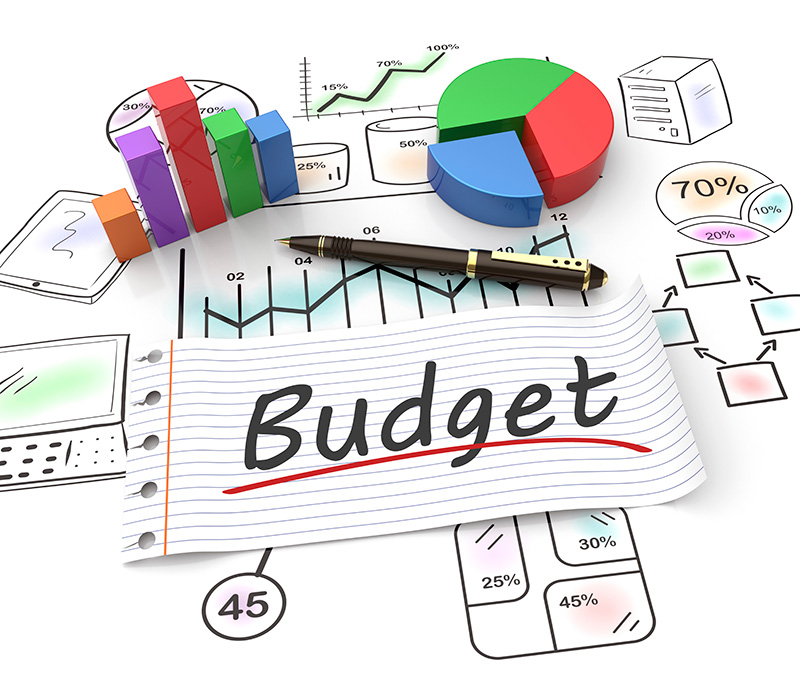
A family budget is important in the best of times, but it’s especially important in tough economic times like these. Forget the word budget, though. It evokes images of a diet where the focus is on what you can’t eat. Instead, adopt a “spending plan.” A spending plan focuses on where you want your money to go, not on where it shouldn’t.

Create an effective spending plan
To create an effective spending plan, you simply need to figure out what money you have coming in and where it’s going out.
Start by listing only those sources of income you can count on each month:
- Paychecks Social Security and pension benefits
- Investment earnings such as bond interest
- Child or spousal support
- Unemployment checks
- If you earn irregular money, such as commissions or self-employment, try to strike a conservative monthly average
Track your monthly expenses
Next, track your monthly expenses. Haul out your checkbook register and credit card statements and start with your core expenses:
- Mortgage or rent payments
- Utilities
- Car expenses
- Credit card payments
- Groceries (an average)
- Childcare
- Insurance premiums
- Taxes
- Regular charitable contributions, and so on
Ideally, this list will include regular savings, though unfortunately many families leave this item to last and “raid” it before the month is out.
Some core expenses will vary widely each month, such as clothing and medical care, and others come due every few months, such as auto insurance and holiday gift buying. Add each item up for the year and calculate its monthly average. (One budget trick is to set aside each month in a savings account that monthly average, say for car insurance, so you’ll have all of it when the bill comes due.)
Non-core or discretionary expenses
Last, track your non-core, or discretionary expenses—those expenses not needed for survival, but which you still may be spending a lot of money on:
- Meals out
- Entertainment
- Travel
- Gifts Hobbies, and so on
Total your monthly expenses and compare the figure with your total monthly income. Surprisingly, you may find that expenses are still less than your income—yet you always run out of money before the month is out, and you never have anything left over for savings. Why the discrepancy? The answer is the black hole of budgeting—cash. Most people spend far more in cash than they realize. Track your cash expenses for at least two months. You’ll be surprised how much goes to coffee, meals out, vending machines and lottery tickets.
But a spending plan involves more than merely tracking expenses. Otherwise, all you’re doing is documenting how you run yourself short every month. A spending plan directs your money before you spend it, so you don’t run out of money before you run out of month, and you control where each dollar goes.
Revisit your expenses
List items in priority and their dollar amount: some are necessities, such as housing and groceries, others are discretionary. Are there items you want to move up on the list, or items that perhaps aren’t as important as you once thought? Perhaps you want to save more for retirement, a home, college or an emergency fund. Increase the amount and move it up on the priority list. You may need to set aside money to buy disability or long-term care insurance, or you may want to travel more or buy theater tickets or give your child music lessons. It’s all a question of priorities, and the priorities are up to you.
Like nearly all families (even the rich have to budget), you probably don’t have enough income to do everything on your list. One option is to earn more income through a second or higher-paying job. Another option is to pay less for some of the priorities. For example, see if you can reduce what you spend on car insurance or credit card interest. Refinancing your home may save money. The money saved can go to other priorities, such as retirement.
Making trade-offs
Now comes the toughest part: making trade-offs. Perhaps you noticed from tracking your expenses that you’re spending a lot of money on clothes or lunches or lottery tickets—far more than you realized. Shift some of this money to higher priorities, such as saving for an exotic vacation, theater tickets or college.
This is the “budgeting” part that people find so difficult. But it’s easier with a spending plan because you’re putting your dollars where you want them to go, not where they just happen to land. It’s the psychological difference between saying, “I have to cut back on what I spend eating out” and “I want to spend more on travel.”